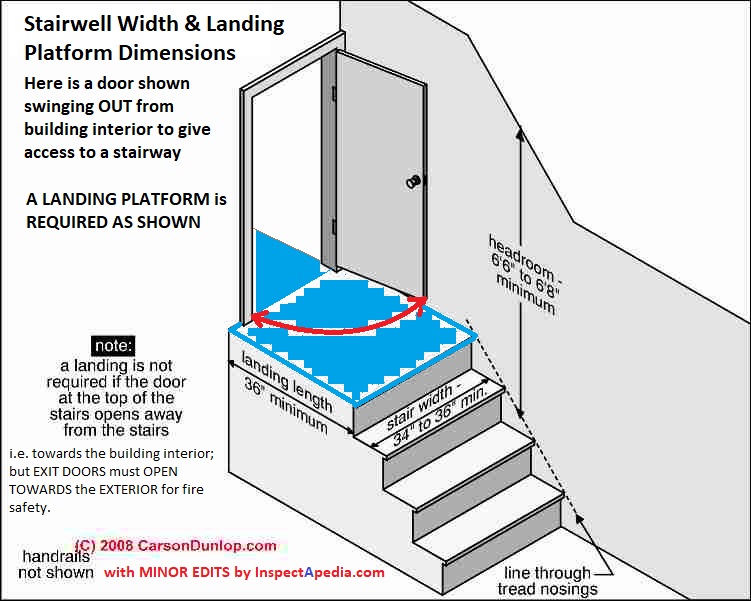Exit route doors must be free of any device or alarm that could restrict emergency use of the exit route if the device or alarm fails.
Emergency exit door height.
An example of an exit discharge is a door at the bottom of a two hour fire resistance rated enclosed stairway that discharges to a place of safety outside the building.
Path of travel door.
The nfpa emergency exit door requirements code states there is a maximum travel distance allowed to find an exit.
A steel fire resistant door frame is also used.
Exit discharge means the part of the exit route that leads directly outside or to a street walkway refuge area public way or open space with access to the outside.
An exit door is a door that allows an emergency exit from a building.
Outdoor exit routes are permitted but must meet the minimum height and width requirement for indoor exit routes and must have guardrails to protect unenclosed sides if a fall hazard exists.
For more detail on exit routes and related standards see exit routes emergency action plans and fire prevention plans in title 29 of the code of federal regulations cfr 1910 33 39.
A path of travel door is a door in the egress pathway leading to or between a fire door or exit door.
Objects that project into the exit must not reduce its width.
1910 36 d 3 an exit route door may be locked from the inside only in mental penal or correctional facilities and then only if supervisory personnel are continuously on duty and the employer has a plan to.
Dependant on its location it need not necessarily be fire rated or steel framed.

